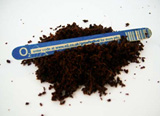
Reality:
Earlier mines can be detected only by human or canine probing.
Some 110 million land mines are hidden in 45 countries. Many of them have been buried for years. It will cost $33 billion to remove them and take 1,100 years under present demining rates, according to the United Nations. It estimates that governments spend $200 million to $300 million on the removal and detection of 10,000 mines each year. In addition, the Red Cross estimates that 26,000 people are killed or injured each year by leftover mines. Large areas, as much as 40 percent of all land in Cambodia and 90 percent in Angola, go unused because of land mines.
Currently, explosives experts remove mines by putting a stick into the ground to locate them. They then excavate and detonate them. They also use dogs and metal detectors, but these approaches can be dangerous: For every 5,000 mines removed, one explosive expert is killed and two others are seriously injured, according to the Vietnam Veterans Foundation of America.
Potential Solution: A weed that turns red when it grows near land mines could help clear dangerous fields in war-torn countries such as Bosnia, Iraq, and Afghanistan. The genetically modified Thales cress is sensitive to nitrogen dioxide, a by-product of mines, and changes from green to red when the gas is present in soil. Researchers hope the modified Thales cress will offer an easier and safer method of detection. Its seeds can be sprayed over fields from planes or via spray guns at a cost significantly less than conventional methods.
Three to six weeks after the plant is sowed over an area, its leaves turn red, its normal autumn color, to signal the approximate location of mines.
Some concerns:
• The weed is shallow-rooted, so it would not be able to detect deeply planted mines. But most mines are found closer to the surface, says Geir Bjoersvik of the mine action unit at Norwegian Peoples Aid in Oslo.
• Some mine casings are sealed to prevent the escape of nitrogen dioxide, which means not all explosives could be detected by the plant.
Read the full article: http://www.time.com/time/magazine/article/0,9171,1565508,00.html











